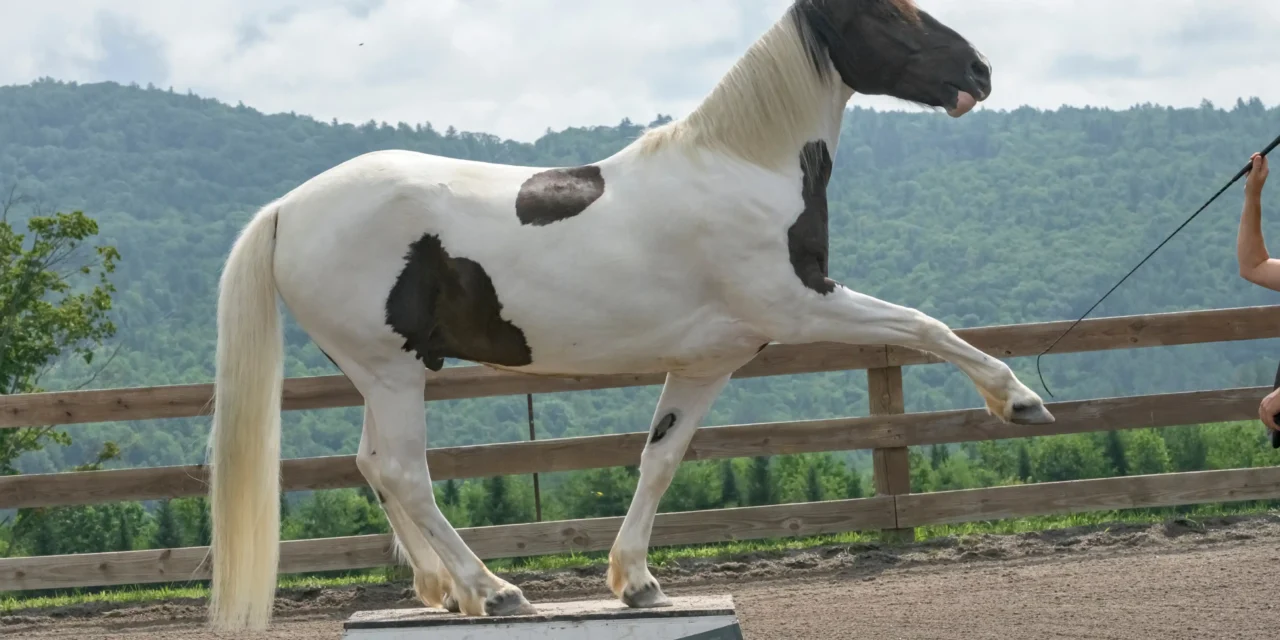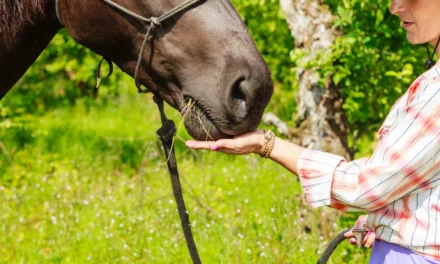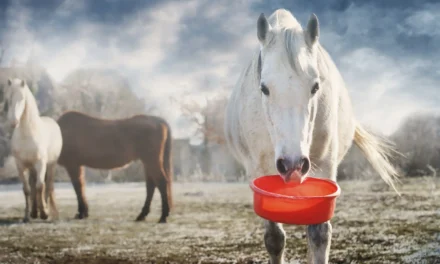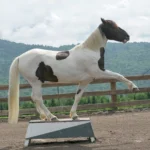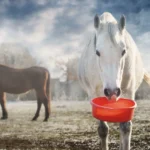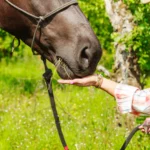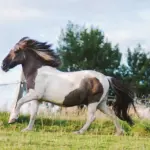Key points at a glance:
- Clicker training is a training method; trick training consists of specific exercises
- Tricks can be taught with or without a clicker
- Clicker training is particularly well suited for teaching precise tricks
- Both approaches support mental and physical development
- Combining the two methods offers unique benefits
Two paths, one goal?
When people talk about trick training or clicker training, many first think of mere “party tricks” with no real practical value. But both approaches are much more than that — they’re valuable tools in modern horse training. While clicker training describes how we can teach our horse something, trick training defines what we are teaching. This distinction is important for understanding how the two areas can complement each other.
The nature of trick training
Originally, what we now call trick training came from classical circus work with horses, where it was mostly about entertaining spectators. Today we know that these exercises can do far more: they promote body awareness, coordination and mental flexibility. Rearing on cue, the Spanish walk or working on a pedestal are not only impressive to watch, but also help to develop specific muscle groups and improve the horse’s balance.
These exercises can be taught using a variety of training methods — from traditional approaches with a whip and body language to modern techniques such as clicker training. Each approach has its own advantages and disadvantages.
The precision of clicker training
Clicker training offers particular advantages when teaching trick exercises. By precisely marking the desired movements, we can clearly communicate to the horse which part of a complex movement was correct. This is especially valuable for challenging exercises such as the bow or the piaffe, where exact body positions are essential.
Another advantage of clicker training is the horse’s active mental involvement. Unlike traditional methods, where the horse often just reacts to signals, here it becomes an active partner, offering and trying out solutions itself. This mental engagement is a key factor for lasting learning success.
The perfect symbiosis
The combination of clicker training and trick training often proves especially effective. Clicker training provides methodological precision, while trick training offers a structured sequence of exercises that build on each other and complement one another.
For example, a simple trick such as touching a target can serve as an introduction to clicker training. From there, more complex exercises can be developed, with clicker training helping to shape and refine precise movements.
More than just a show
Both clicker training and trick training offer benefits that go far beyond the “show effect”:
Physical benefits:
- Development of balance and coordination
- Targeted muscle building
- Improved suppleness and flexibility
- Enhanced body awareness
Mental benefits:
- Improved ability to concentrate
- Development of problem-solving strategies
- Building self-confidence
- Strengthening the horse–human relationship
Practical benefits
Many of the skills learned can be applied directly to everyday situations. A horse that has learned to respond precisely to signals and to control its body with awareness will also:
- Be easier to handle
- Cooperate better during veterinary treatments
- Work with more coordination and balance
- Be more attentive and focused
From performance to purpose
Combining clicker training with trick training allows us to make the most of both worlds. Clicker training provides the methodological foundation for precise, stress-free learning, while trick training offers a well-structured set of exercises that develop both body and mind.
What may look like mere “tricks” at first glance is, on closer inspection, a sophisticated training method that:
- Systematically develops skills
- Supports physical and mental development
- Refines communication between horse and human
- Enables lasting learning success
The true value lies not in performing spectacular exercises, but in the shared journey of development between horse and human that this type of training makes possible.
- Clicker training and trick training – more than just a show - 29. September 2025
- Solving complex tasks with clicker training – an example exercise with a feed trough - 29. September 2025
- Understanding clicker training – more than just handing out treats - 29. September 2025

